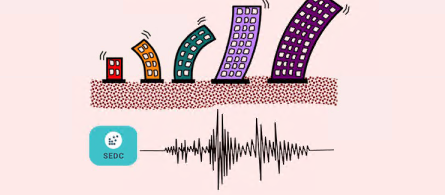
MP4 | Video: h264, 1280x720 | Audio: AAC, 44.1 KHz, 2 ChGenre: eLearning | Language: English + srt | Duration: 13 lectures (56m) | Size: 327.6 MB
Basics of Earthquake Eeering, Seismic Analysis Methods, Seismology & Seismic Risks of Built Environments
Basics and general concepts of seismology, earthquake eeering and seismic risks
Earth structure and layers, plate tectonic, continent movements
Fault types and mechanism
Seismic waves and seismograph and earthquake record
Earthquake epicentre and locations
Earthquake scales
World seismicity
Phenomena during and after the earthquake
Seismograph key parameters
Gutenberg-Richter law
Response spectrum
Seismic Analysis Methods
Earthquake risk and parameters
Effect of earthquake on built environment and human
Effect of earthquake on buildings
Earthquake mitigation measures
Structural analysis and physics in a basic level.
This course, includes the basics of earthquake eeering, seismic analysis methods, seismology and seismic risks of built environments.
In this course, you will learn аbout:
1- Seismology, earth structure, and layers and plate tectonics and continent movements which are the main cause of earthquakes. After that, I will focus on faults and different types of the faults that can cause damage.
2- How scientists record the earthquakes and different seismic waves which are very important for earthquake eeers.
3- How to find the earthquake epicentre and what are the different seismic scales.
4- World's seismicity followed by the phenomena during and after the earthquakes.
5- Seismograph parameters and Gutenberg Richter law.
6- How to calculate earthquake return period
7- Earthquake response spectrum.
8- All the seismic analysis methods of structures such as equivalent static analysis, response spectrum analysis and history analysis.
9- Seismic risk parameters and how to reduce these risks.
10- The impacts of the built environments and humans and the economic aspect of earthquakes.
11- Different mitigation measures in order to reduce earthquake risk.
By the end of this course, you will get a deep understanding of earthquake eeering, seismic analysis methods, seismology, and seismic risks of built environments.
THIS COURSE IS BENEFICIAL FOR:
· Earthquake eeering students
· Geotechnical eeering students
· Civil eeering students
· Structural eeering students
Civil and geotechnical eeering students
Structural and earthquake eeering students
Graduate eeers
Structural and geotechnical eeers rag from bners to intermediate level who would like to refresh their knowledge and get a practical knowledge of seismic loads
DOWNLOAD
uploadgig.com
rapidgator.net
nitro.download










